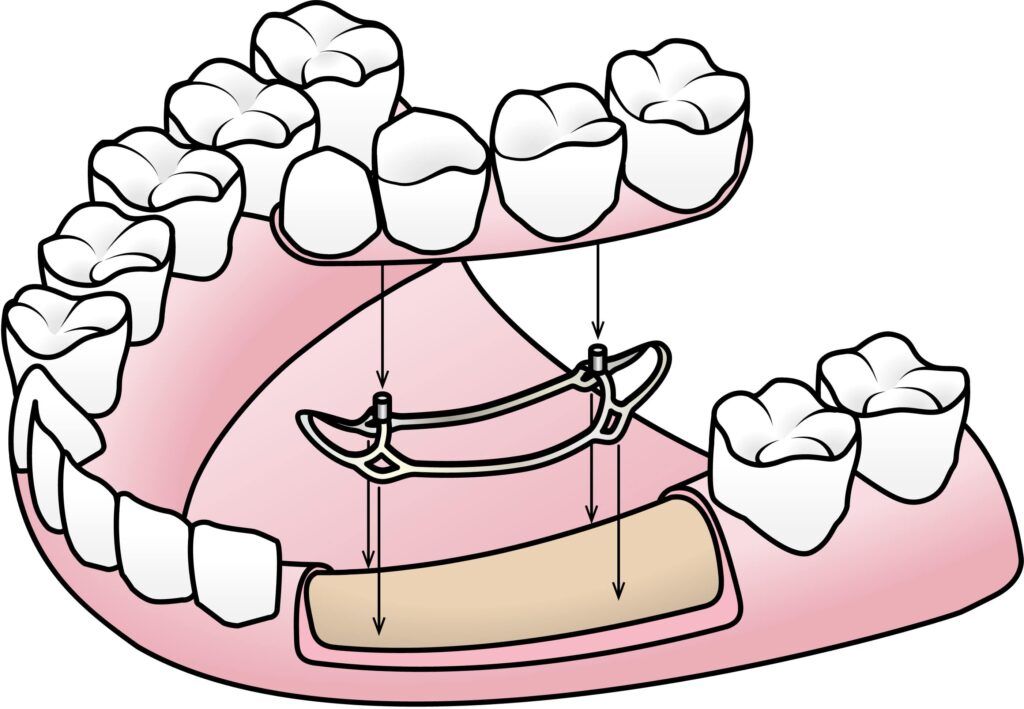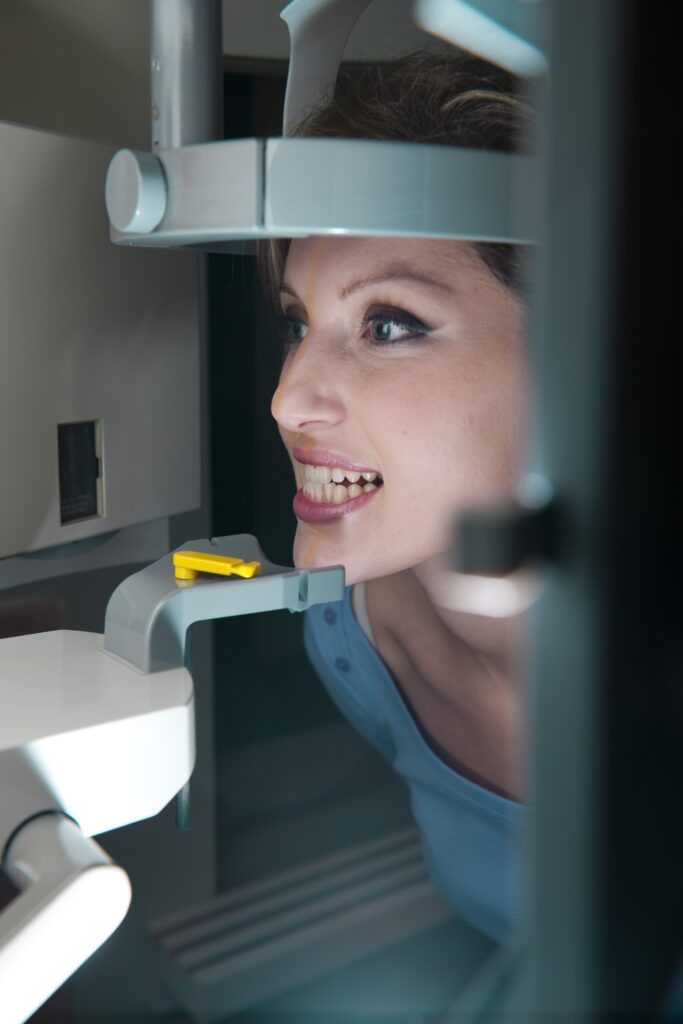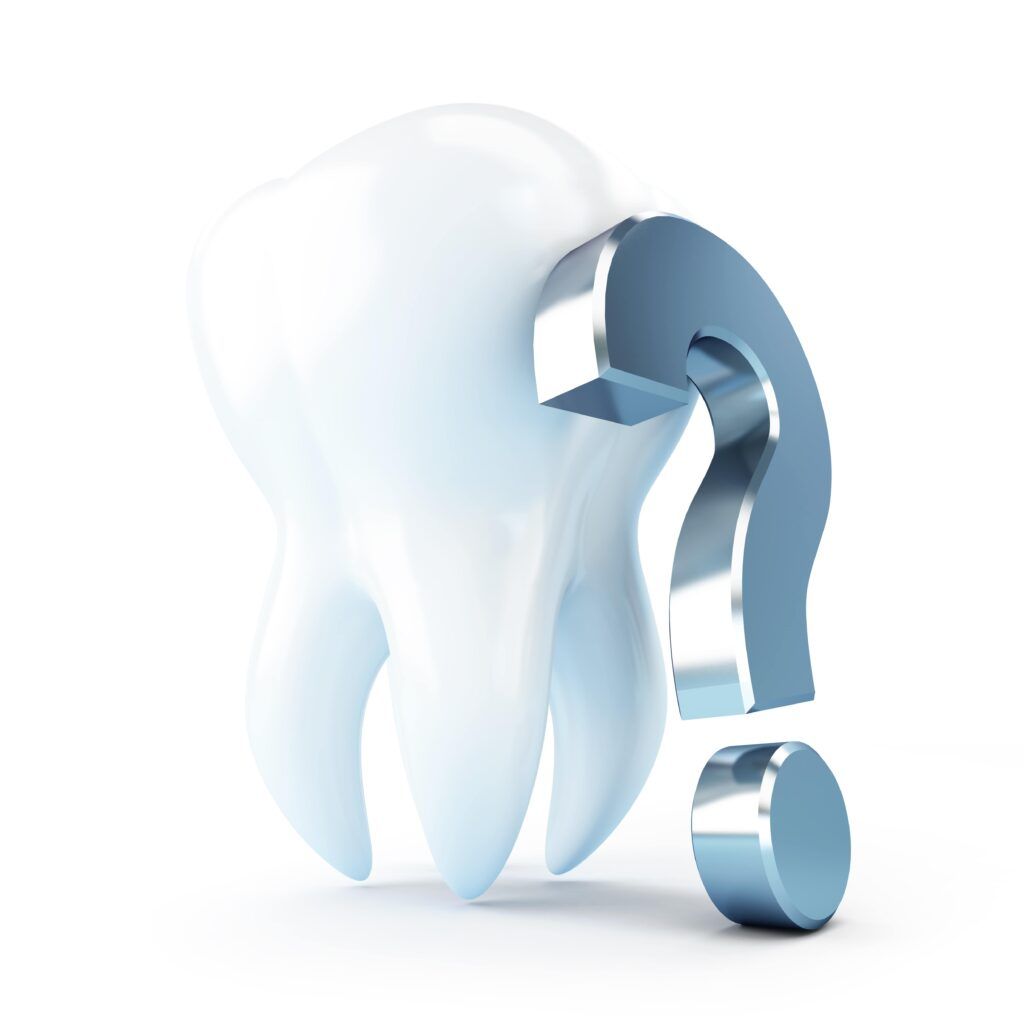In the realm of dental health and restoration, dental implants stand as a beacon of hope for many facing the challenge of tooth loss, offering a path to reclaim not only oral functionality but also confidence in their smile. Among the various options available, subperiosteal implants emerge as a distinctive choice, particularly for those who may not have sufficient healthy jawbone to support traditional implants and are either unable or unwilling to undergo bone augmentation. This blog delves into the nuances of subperiosteal implants, providing a comprehensive overview aimed at individuals considering this innovative solution. From understanding what subperiosteal implants are and identifying the ideal candidates, to exploring the procedural intricacies and weighing the benefits against potential risks, this guide endeavors to arm readers with the knowledge needed to make informed decisions about their dental health options.
In This Blog:
- What are Subperiosteal Implants?
- The Ideal Candiate for Subperiosteal Implants
- The Procedure of Installing Subperiosteal Implants
- Benefits of Subperiosteal Implants
- Potential Risks and Complications
- FAQs
What Are Subperiosteal Implants?
Subperiosteal implants represent a specialized dental solution designed for individuals who may not be suitable candidates for traditional endosteal implants due to insufficient bone density or volume in the jaw. Unlike endosteal implants, which are inserted directly into the jawbone, subperiosteal implants rest on top of the bone but beneath the gum tissue. This unique placement makes them an ideal choice for patients who cannot undergo bone augmentation procedures for medical or personal reasons.

The structure of a subperiosteal implant typically involves a metal frame that is custom-fabricated to sit comfortably and securely on the jawbone. This frame has multiple posts attached to it, which protrude through the gums and act as anchors for the placement of dental prosthetics, such as crowns or bridges. The materials used for subperiosteal implants are biocompatible, with titanium being the most common due to its strength, durability, and the ability to integrate well with biological tissues without causing adverse reactions.
The differentiation between subperiosteal and endosteal implants is crucial for understanding the appropriate application and potential benefits of each. While endosteal implants are widely used and considered the gold standard for tooth replacement, they require a certain level of bone density for successful implantation and osseointegration (the process by which the implant fuses with the bone). Subperiosteal implants bypass this requirement by resting on top of the bone, offering a viable alternative for patients who might otherwise be left with limited options.
Understanding the nature, structure, and placement of subperiosteal implants is the first step in considering whether they might be the right solution for one’s dental restoration needs. With advancements in dental technology and surgical techniques, subperiosteal implants have become a more accessible and effective option for addressing complex dental issues, providing a foundation for renewed oral health and improved quality of life.
The Ideal Candidate for Subperiosteal Implants
Identifying the ideal candidate for subperiosteal implants is a critical step in ensuring the success and longevity of this dental restoration method. These implants are particularly suited for individuals who face specific challenges that make them less than ideal candidates for traditional implant solutions, such as endosteal implants. Here are the criteria that help determine whether an individual might be an ideal candidate for subperiosteal implants:
Insufficient Jawbone Density or Volume:
The primary indicator for considering subperiosteal implants is a lack of adequate jawbone. This condition may be due to various factors, including long-term tooth loss, periodontal disease, or age-related resorption of the bone. Patients who do not have enough bone to support endosteal implants and are either unable or unwilling to undergo bone grafting or augmentation procedures may find subperiosteal implants to be an effective alternative.
Medical Conditions Preventing Bone Grafting:
Some patients may have medical conditions or take medications that inhibit bone growth or make bone grafting surgeries risky. For these individuals, the less invasive nature of subperiosteal implant placement, which does not require the same degree of bone integrity as endosteal implants, can offer a safer path to dental restoration.
Seeking a Less Invasive Solution:
Patients who prefer a less invasive surgical procedure may opt for subperiosteal implants. While still requiring surgery, the process for placing a subperiosteal implant is generally less complex than the bone augmentation procedures required for preparing the jaw for traditional implants.
Psychological and Health Benefits:
Candidates who are motivated by the potential to improve oral functionality, aesthetics, and overall quality of life through dental restoration may find subperiosteal implants particularly appealing. These implants can offer a significant boost in self-esteem and comfort for those who have been struggling with dental issues for an extended period.
Being an ideal candidate goes beyond the physical requirements; it also encompasses a patient’s motivation and psychological readiness for the procedure. Prospective candidates should have realistic expectations about the outcomes, be committed to the necessary pre- and post-operative care, and be aware of the benefits and risks associated with subperiosteal implants.
A thorough evaluation by a dental professional, including a comprehensive review of the patient’s medical history, dental health, and bone density assessments, is essential to determining suitability for subperiosteal implants. This personalized approach ensures that each patient receives the most appropriate and effective treatment plan for their unique dental restoration needs.
The Procedure of Installing Subperiosteal Implants
The installation of subperiosteal implants is a meticulous process that requires careful planning and precision to ensure the best outcomes for the patient. Understanding the steps involved can help demystify the procedure and prepare candidates for what to expect. Here’s a detailed overview of the process:
Pre-procedure Assessments and Preparations

- Initial Consultation: The journey begins with a comprehensive evaluation by a dental specialist. This includes a detailed medical history review, oral examination, and discussions about the patient’s dental goals and expectations.
- Imaging and Modeling: Advanced imaging techniques, such as CT scans or X-rays, are utilized to assess the jawbone’s condition and create a precise model of the mouth. This information is crucial for designing the custom-fit subperiosteal implant frame.
- Treatment Planning: Based on the imaging results, the dental team devises a personalized treatment plan. This plan outlines the specifics of the implant procedure, including the design of the implant frame, the surgical approach, and any preparatory steps required.
Surgical Procedure
- Anesthesia: To ensure comfort and minimize pain, the procedure is typically performed under local anesthesia, although sedation options may be available for patients with dental anxiety.
- Exposing the Jawbone: A small incision is made in the gum tissue to expose the underlying jawbone, providing access for placing the implant frame.
- Placing the Implant Frame: The custom-designed metal frame is carefully positioned onto the jawbone. Its design ensures it fits snugly and securely on the bone, maximizing contact for stability.
- Securing the Frame and Closing the Incision: Once the frame is in place, the gum tissue is repositioned over it, leaving the posts that are attached to the frame protruding above the gum line. These posts will later serve as anchors for the dental prostheses (crowns, bridges, or dentures).
- Healing and Osseointegration: Although subperiosteal implants do not require osseointegration in the same way as endosteal implants, the gum tissue and surrounding bone need time to heal and adapt to the implant frame. This period also allows for any necessary adjustments to ensure the best fit and comfort.
Post-surgery Care and Follow-up Requirements
- Immediate Aftercare: Post-operative instructions may include managing swelling and discomfort with medications, maintaining oral hygiene with gentle cleaning, and adhering to a soft food diet to facilitate healing.
- Follow-up Visits: Regular check-ups are scheduled to monitor the healing process, make any necessary adjustments, and plan for the attachment of the dental prosthetics to the implant posts.
- Prosthetic Attachment: Once healing is confirmed, and the gums are healthy, custom-made dental prostheses are attached to the posts, completing the restoration process.
The procedure for installing subperiosteal implants, from the initial assessment to the final placement of the prosthetics, is designed to provide a durable and functional dental restoration solution. With proper care and maintenance, patients can look forward to improved oral health, aesthetics, and the return of a confident smile.
FAQs About Subperiosteal Implants
In this section, we’ll address some of the most frequently asked questions about subperiosteal implants, providing you with clear, concise answers to help you understand this dental restoration option better.
1. What makes subperiosteal implants different from traditional dental implants?
Subperiosteal implants differ from traditional endosteal implants primarily in their placement and suitability for patients. While endosteal implants are inserted directly into the jawbone, subperiosteal implants are placed on top of the jawbone but beneath the gum tissue. This makes them a viable option for patients who do not have sufficient jawbone density and are not candidates for, or wish to avoid, bone augmentation procedures.

2. How long do subperiosteal implants last?
With proper care and maintenance, subperiosteal implants can last many years, and in some cases, they can be a lifelong solution. Their longevity depends on several factors, including the patient’s oral hygiene practices, regular dental check-ups, and avoidance of habits that could damage the implants, such as smoking or chewing hard objects.
3. Are subperiosteal implants safe?
Yes, subperiosteal implants are considered safe for most patients. They are made from biocompatible materials, like titanium, which is well-tolerated by the body and has a low risk of rejection. As with any surgical procedure, there are risks involved, but these are minimized with proper patient selection, surgical technique, and post-operative care.
4. What is the recovery time for subperiosteal implant surgery?
The recovery time can vary depending on the individual’s health, the complexity of the surgery, and how well the post-operative care instructions are followed. Generally, patients can expect some swelling and discomfort for a few days after the procedure, with significant improvement within the first week. The complete healing process, until the dental prosthesis is attached, may take several weeks to a few months.
5. How much do subperiosteal implants cost, and are they covered by insurance?
The cost of subperiosteal implants can vary widely based on geographic location, the complexity of the case, and the dental professional’s experience. They tend to be more expensive than traditional implants due to the custom fabrication of the implant frame. Some insurance plans may cover a portion of the costs associated with subperiosteal implants, especially if the procedure is considered medically necessary. However, coverage varies by provider and policy, so it’s important to consult with your insurance company and dental office for specific information regarding your case.
This FAQ section aims to address the common queries related to subperiosteal implants. However, it’s always best to discuss your individual needs and concerns with a dental professional who can provide you with personalized advice and information.
Conclusion
In conclusion, subperiosteal implants offer a promising solution for individuals who face challenges with traditional dental implants due to insufficient jawbone density or other limitations. By understanding the unique aspects of subperiosteal implants—from their structure and installation process to their benefits and potential risks—patients can make informed decisions about their dental health options. These implants not only provide a viable alternative for those seeking to improve oral functionality and aesthetics but also offer the potential for a significant boost in quality of life and self-confidence. If you are considering subperiosteal implants, it’s crucial to consult with a dental professional who can evaluate your specific needs and guide you through the process to achieve the best possible outcomes. With the right care and attention, subperiosteal implants can be a durable, effective solution for restoring your smile and enhancing your overall well-being.

